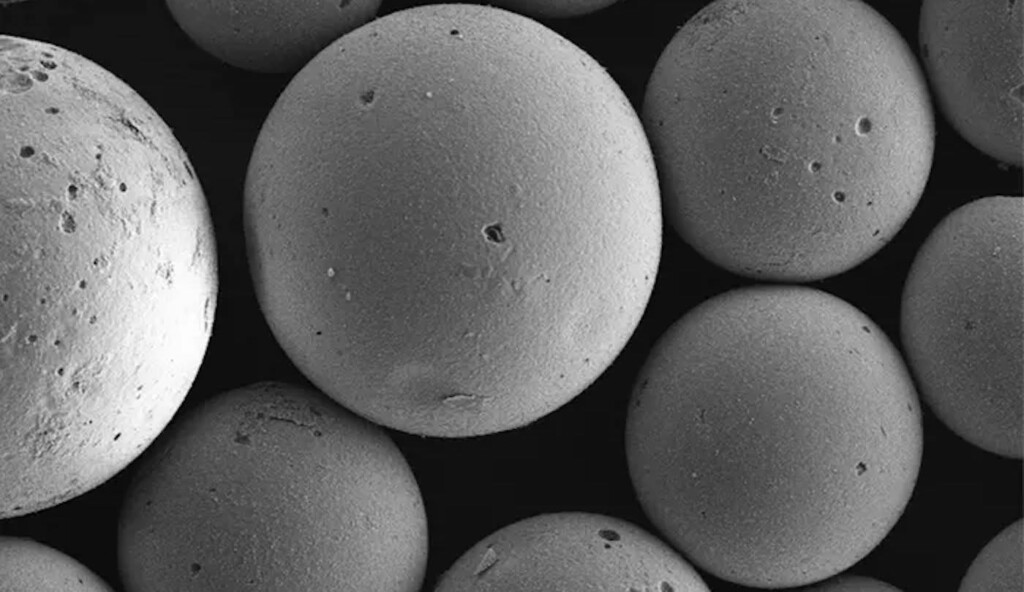 CARBALIVE beads viewed with a scanning electron microscope – CREDIT: University of Brighton / Yaqrit
CARBALIVE beads viewed with a scanning electron microscope – CREDIT: University of Brighton / YaqritInnovative carbon beads, invented by researchers at University College London, reduce bad bacteria and inflammation in animal models, which are linked to liver cirrhosis and other serious health issues.
The study, published in Gut, found that the carbon beads were effective in restoring gut health and had a positive impact on liver, kidney and brain function in rats and mice. They were also found to be safe for human use.
“When the balance of the microbiome is upset, ‘bad’ bacteria can proliferate and out-compete the ‘good’ bacteria that keeps the gut healthy,” explained senior author Professor Rajiv Jalan from the UCL Institute for Liver and Digestive Health.
By excreting endotoxin and other toxic metabolites, they transform the gut environment to make it more favorable for them—and hostile to good bacteria—which triggers gut inflammation, and leakiness in the gut wall, resulting in damage to other organs such as the liver, kidneys and brain.
In cirrhosis, a condition characterized by scarring of the liver in 100 million people currently worldwide, inflammation caused by endotoxins can exacerbate the liver damage. A standard treatment for cirrhosis is antibiotics aimed at controlling bad bacteria, but this comes with the risk of antibiotic resistance and is only used in late-stage disease.
To overcome this, scientists at UCL developed the tiny oral carbon beads, which have a special microscopic physical structure designed to adsorb both large and small molecules in the gut.
In the study, researchers tested the effectiveness of the carbon beads (known by the product name CARBALIVE) and assessed the impact on liver, kidney and brain function in rats and mice.
They found that when ingested every day for several weeks, the beads were effective in preventing the progress of liver scarring and injury in animals with cirrhosis, and they reduced mortality in animals with acute-on-chronic-liver-failure.
GUT TIP FOR CANCER:Men Free of Prostate Cancer Had Guts Fortified By Microbes Found in Yogurt
Tested on 28 cirrhosis patients
The beads, which are licensed to UCL-spinout Yaqrit, were also tested on 28 cirrhosis patients and proved to be safe with negligible side effects. If the same benefits observed in animal models occur in humans, the beads could be an important new tool to help tackle liver disease.
“These novel, engineered carbon beads, which are swallowed and pass through the body unaltered, are smaller than a grain of salt,” said Michal Kowalski, the CARBALIVE product lead at Yaqrit. “They work by absorbing the endotoxins and other metabolites produced by ‘bad’ bacteria in the gut. This prevents these toxins from leaching into other areas of the body and causing damage, as they do in cirrhosis.
“The results in animal models are very positive, with reduction in gut permeability, liver injury, as well as brain and kidney dysfunction.”
The results open the door for further trials to test the efficacy of the carbon beads in humans, one of which is due to start soon. If the beads are proved to be effective at halting or slowing the progression of liver damage, they could be an invaluable tool for treating liver disease and possibly other conditions associated with poor microbiome health.
FOOD ALLERGY TIP: Peanut and Food Allergies May Be Reversed with Compound Produced by Healthy Gut Bacteria
“I have high hopes that the positive impact of these carbon beads in animal models will be seen in humans, which is exciting not just for the treatment of liver disease but potentially any health condition that is caused or exacerbated by a gut microbiome that doesn’t work as it should,” says Jalan, who teaches Hepatology at UCL.
“This might include conditions such as irritable bowel syndrome, for example, which is on the rise in many countries.”
Thanks to grant funding from a European Union innovation program, they were able to build a factory to manufacture the beads and continue their research into potential uses.
“I’m optimistic that this journey will end with these beads being approved to help treat liver disease and other conditions within the next few years.”
SEND the Good News to Liver Patients on Social Media…
Source link

